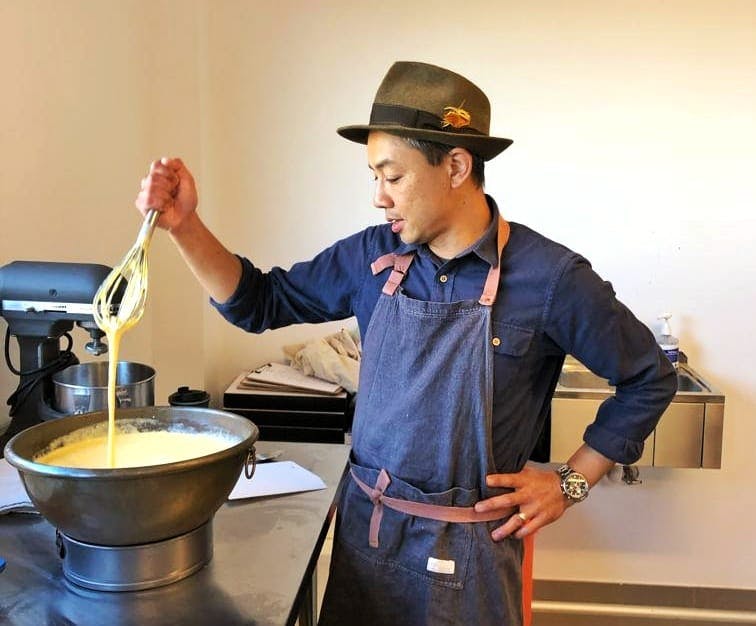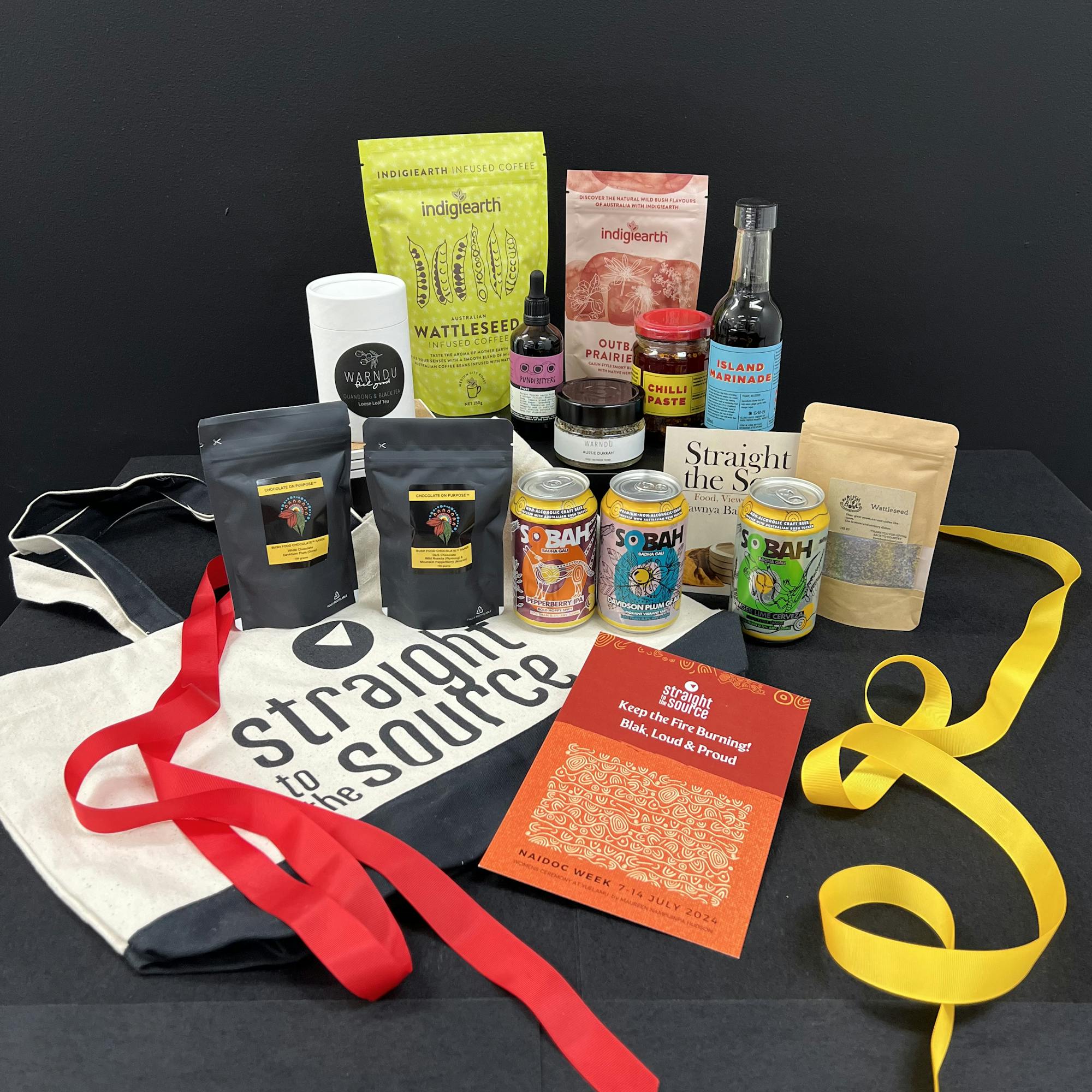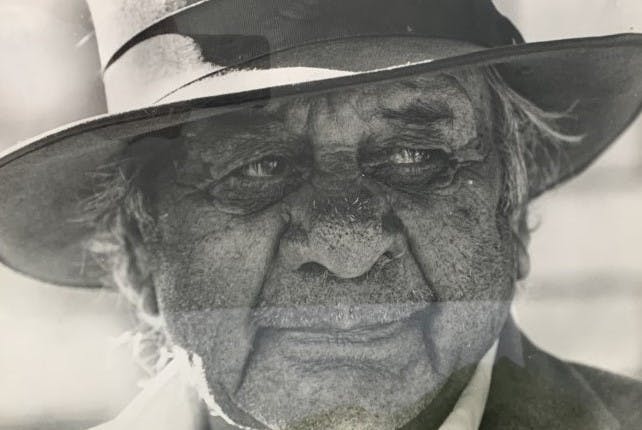CHEF IN FOCUS: Christopher Thé
Star ingredients, sustainability and next steps

If there’s one person that knows the power of the right ingredients – especially when met with just the right stroke of genius – it’s master pastry chef Christopher Thé. From cutting his teeth at fine dining restaurants including Bel Mondo, Claude’s and Quay, to putting his stamp on the Sydney food scene through Black Star Pastry, Chris’ hospitality experience is unmatched. We caught up with Chris to chat about life beyond Black Star, what goes into the perfect Wellington (hint: it’s not beef), his latest venture and the importance of knowing where your produce comes from.
Straight To The Source: You were at the helm of Black Star Pastry for 11 years. Can you let us in on key learnings from your time behind the world’s most Instagrammed cake?
Christopher Thé: At the time, I was right on the cusp of Sydney’s shift in focus from fine dining to casual. All my colleagues and I were trained in fine dining restaurants, and then we all disseminated and started doing our own things like casual eateries. What we really tried to do was bring that craft and know-how from all those years working in fine dining to something that was accessible and local.
I found that if you just focus on quality, people will notice and they will support you – they really did support us at Black Star. We did really well, because people really loved our food. We have people still saying “Oh we love that cake, it means so much to us!”. I think the takeaway is to always strive for quality, and always try to put more in than you take out; because then eventually people will appreciate you and support you. It was hard at the time because it cost more in terms of ingredients and the extra effort you have to put in – but for me, that’s the key to success: that the quality is there.
STTS: How important is understanding provenance when sourcing quality ingredients?
CT: It’s quite difficult at the start. As consumers and chefs, we’re quite disconnected from our ingredients – I truly feel that. For instance, meat generally comes in a packet. But when you go to a farm and you see how much effort goes into growing something, it all starts to fall into place in your mind about how much care and respect it takes to actually bring food to the table. I think it’s critical to understand this. So once you start to know the story and how things are grown, then that really complements your cooking.
STTS: Much to every Sydney foodie’s delight, you snapped up the former Mrs Underwood cafe site in Stanmore earlier this year – what do you have in store for everyone?
CT: *laughs* Well, renovations are going to kick off in two weeks, but in the meantime I’m still running a pop-up cafe. It’s a lot of fun and it’s giving me a chance to test some recipes. Our croissant work is really on point, plus sourdough bread, but the key product we really want to do well is our cakes.
A lot of effort’s going into the R-&-D, the recipe building of these cakes. Especially for myself, there's a lot of expectation – they have to live up to being as good or better than I’ve done before. But for now, we’re doing just cosy, homely, cafe meals – I bake all the bread and pastries too.
I feel the renovation should be okay once we kick off. I’ve done quite a few cafes, and have learned that as a small business you have to be really careful. You’re better off spending money on great equipment to make food, as opposed to fancy fitouts. You need enough to get people transported away from their everyday lives, but there’s a certain point where perhaps you end up wasting a lot of money on fitouts. Mrs Underwood is a beautiful space already – the shop itself is one hundred years old! We don’t have to do much to it – I just want a really lovely counter to showcase my work.
STTS: While you might be synonymous with sweet, your savoury game is just as good. Can you tell us a bit more about the Kangaroo Wellington you served at The Source Kitchen at the recent Fine Food Expo?
CT: It was (I think!) the perfect way to showcase kangaroo, pastry and mushrooms. When you collaborate with other people, sometimes you’re given this mix of stuff that you have to make into a cohesive dish – I think that’s the hard part. When you’re cooking, everything has to have a meaning and a purpose. It needs to make sense – It can’t be silly, it can’t be gratuitous. For example, I never put garnish on a cake that doesn’t add to the flavour or texture of the cake.
The hard part was that kangaroo can be quite tough if you don’t cook it well. I had to use all my oven knowledge in order to get all the different textures to work together – and in the end, the Wellington came together great.
I love kangaroo, I’ve got it on my menu. Kangaroo done well, and sauced well, is so much better than kangaroo that’s not done well. I remember when I was a young chef and native foods like kangaroo started to come on the scene – it was very gamey and quite tough, and if you went anywhere past medium-rare it became inedible.
But with Paroo Premium Kangaroo [used in the Wellington], I was pleasantly surprised. I was working with their strip loin, and it was very similar to a beef fillet – supple, tender, didn’t overcook easily, and actually a lot more neutral than I remember kangaroo being. So actually, a bit more flavoursome than beef! That’s why I’m keeping it on the menu – because, for example, if you have a chunky beef pie you can just substitute it for kangaroo.
The other thing I love about kangaroo? If you’re looking from a sustainability point of view, it takes up no land, no feed, and little to no water use, especially when compared to cattle or sheep production.
STTS: What excites you most about the future of food?
CT: What excites me most of all is the awareness we’re building. More and more, we’re starting to take into account the whole beginning-to-end process – not just the waste or end point, but the whole life cycle.
It’s apt because, post-COVID, we don’t have as many people and we all have to be that much cleverer about how we produce and operate. Making sure that you don’t waste anything is really important to staying afloat as a business, now more than ever.
The technology now has leapt forward, even just in the last few years. Back at Black Star, I’d have to bake everything in the morning and if I didn’t sell it by the afternoon then it would all go to waste. Back then, that was kind of still viable, but now we’ve got the technology that allows us to basically bake to order – one for one. Once a customer orders, the equipment’s so good that we can just bake it for them and there’s no waste at all.
STTS: What’s inspiring this next chapter in your food story?
CT: With the new business, I'm very inspired by native foods. There’s so many new flavours I’ve come across – just learning about it is so fascinating for a chef. I’ve been cooking for a long time and it’s not often you come across a taste you haven’t tasted before. I’ve tasted so many new things this past year.
I love Geraldton Wax – it’s a flower, but it has this citrus note to it. Saline plants are also interesting; with all the degraded saline farmland in Western Australia, they've worked out that in this salt-crusted earth you can grow samphire and saltbush. I love cooking with saltbush – it’s really lovely in our polenta, and we make saltbush scones as well. We’ll be using a lot of those sorts of things, along with traditional preservation techniques too.
One of the tenets of [the new business] is that we’re cooking food for this climate. In my previous work, I used to have a lot of cream – you’d take it out of the fridge and in half an hour your cake would be melting everywhere. I’ve drawn a real line in the sand that our food this time around has to withstand our climate. I feel that’s the future of food, really being one and the same with the land and the climate and your cooking.
Stay Up To Date
Sign up to receive our monthly newsletter with upcoming events, producer-in-focus, food news and so much more.


